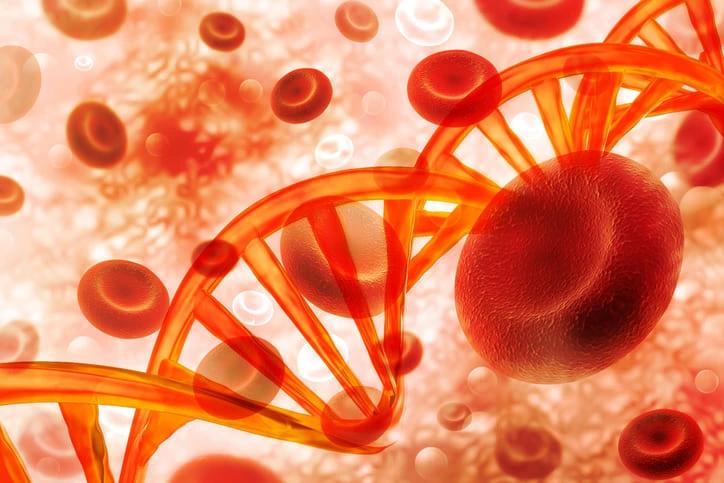KEY TAKEAWAYS
- Phase 1 study aimed to assess the safety, tolerability, RP2D, PK/PD, and preliminary efficacy of HMPL-306.
- The main objectives were to evaluate safety and tolerability and determine the MTD/RP2D.
- Based on the combined evaluation of safety, tolerability, PK/PD, and preliminary efficacy, the RP2D for HMPL-306 was determined to be 250 mg QD in Cycle 1 and 150 mg QD in Cycle 2.
HMPL-306 is a highly selective inhibitor of IDH1/2 mutants. The objective of the phase 1 study was to assess the safety, tolerability, recommended phase 2 study (RP2D), pharmacokinetics/pharmacodynamics (PK/PD), and preliminary efficacy of HMPL-306 in patients with relapsed/refractory myeloid hematological malignancies (HMs) harboring mutant IDH1 and 2 genes. Phases of dose escalation and dose expansion were included in the phase 1 open-label, multicenter study. Patients with relapsed or resistant myeloid HMs and mutant IDH1 or IDH2 were eligible. In 6 cohorts with 28-day treatment cycles, the dose was increased from 25 mgQD to 250 mgQD using the mTPI-2 design to ascertain the maximum tolerable dose (MTD). In dose expansion, patients were administered HMPL-306 at RP2D in 28-day cycles until disease progression or intolerable toxicity, whichever occurred first. Safety, tolerability, and MTD/RP2D were the main objectives.
PK/PD and overall response rate (ORR, complete remission [CR]+CR with incomplete hematologic recovery [CRi]+marrow CR [mCR]/morphologic leukemia-free state+partial remission [PR]) were the primary secondary objectives. The dosage increase is complete. As of 30 November 2022, 49 patients with non-hotspot mutations were enrolled (n=4,3, 3, 25, 7, 7 in 25, 50, 100, 150, 200, 250 mg QD cohorts, respectively): aged (median) 63 years, 26 patients (53.1%) were male, and 31 patients (63.3%) had previously received 2L of therapy. During the DLT observation period, no dose-limiting toxicities (DLTs) were seen. About 30 additional patients were enrolled in the 150 (n=22), 200 (n=4), and 250 (n=4) mg QD cohorts based on safety, tolerability, PK/PD, and preliminary efficacy in each cohort. The best response was 1CR in the 100 mg cohort; 9 CRs (CR+CRi, including 5 CRminimal residual disease negative [MRD-]) and 1 PR in 150 mg QD; 1 CR in 200 mg QD; and 3 CRs (CR+CRi, including 1 CRMRD-) in 250 mg QD; with an ORR of 33.3% (1/3), 40.0% (10/25), 14.3% (1/7) and 42.9% (3/7), respectively. Of the 37 patients with susceptible IDH1 and 2 mutations (IDH1-R132C, IDH2-R140Q, or R172K), the ORR was 50% (1/2), 45% (9/20), 25% (2/4), and 50% (3/6) in the 100, 150,200 and 250 mg QD cohorts, respectively. The plasma drug exposures increased as the dose increased from 25 mg to 250 mg. Mean terminal t1/2 was 90-120 hours, and a steady state was reached after 22 or 28 days, with approximately 5-fold accumulation after multiple dosages. As measured by plasma 2-HG level change, target inhibition was affected by IDH mutation types and subject 2-HG baselines.
After adjusting for baselines, it was predicted that 250 mg QD would attain >90% target inhibition significantly sooner than 150 mg QD. After multiple doses of 250 mg QD, the maximum target inhibition would be slightly more significant than 150 mg. About 34 patients reported TRAEs (69.4%), and 13 patients reported grade 3 TRAEs (26.5%). The safety profile was comparable between the 150 mg QD and 250 mg QD cohorts throughout all treatment cycles, with 250 mg QD exhibiting less non-hematological toxicity than 150 mg QD in Cycle 1. Combining safety, tolerability, PK/PD, and preliminary efficacy, the RP2D was determined to be 250 mg QD in Cycle 1 and 150 mg in Cycle 2. The expansion of dosage is ongoing.
Clinical Trial: https://clinicaltrials.gov/ct2/show/NCT04272957
Lijuan Hu, Wei-Li Zhao, Wen Wu, Xudong Wei, Ruihua Mi, Yu Hu, Qiubai Li, Wenjuan He, Juan Li, Yugang Dong, Hehua Wang, Xuhan Zhang, Yu Zhang, Zhongyuan Xu, Hui Liu, Zhen Cai, jie sun, Yajing Xu, Zhiping Jiang, Cheng Zhang, Guo Chen, Tiejun Gong, Qinghua Tang, Hongmei Jing, Lan Ma, Sujun Gao, Qiqi Liu, Zeyu Zhong, Yongxin Ren, Jian Chen, Songhua Fan, Michael Shi, Weiguo Su, Xiaojun Huang/A PHASE 1 STUDY OF HMPL-306, A DUAL INHIBITOR OF MUTANT ISOCITRATE DEHYDROGENASE (IDH) 1 AND 2, IN PTS WITH RELAPSED/REFRACTORY MYELOID HEMATOLOGICAL MALIGNANCIES HARBORING IDH1 AND/OR 2 MUTATIONS/Inc, M. G. (n.d.). A PHASE 1 STUDY OF HMPL-306, A DUAL INHIBITOR OF MUTANT ISOCITRATE… by Lijuan Hu. Library.ehaweb.org. Retrieved July 15, 2023, from https://library.ehaweb.org/eha/2023/eha2023-congress/386368/lijuan.hu.a.phase.1.study.of.hmpl-306.a.dual.inhibitor.of.mutant.isocitrate.html?f=menu%3D16%2Abrowseby%3D8%2Asortby%3D2%2Ace_id%3D2489%2Aot_id%3D27888%2Atrend%3D4016%2Amarker%3D4178



